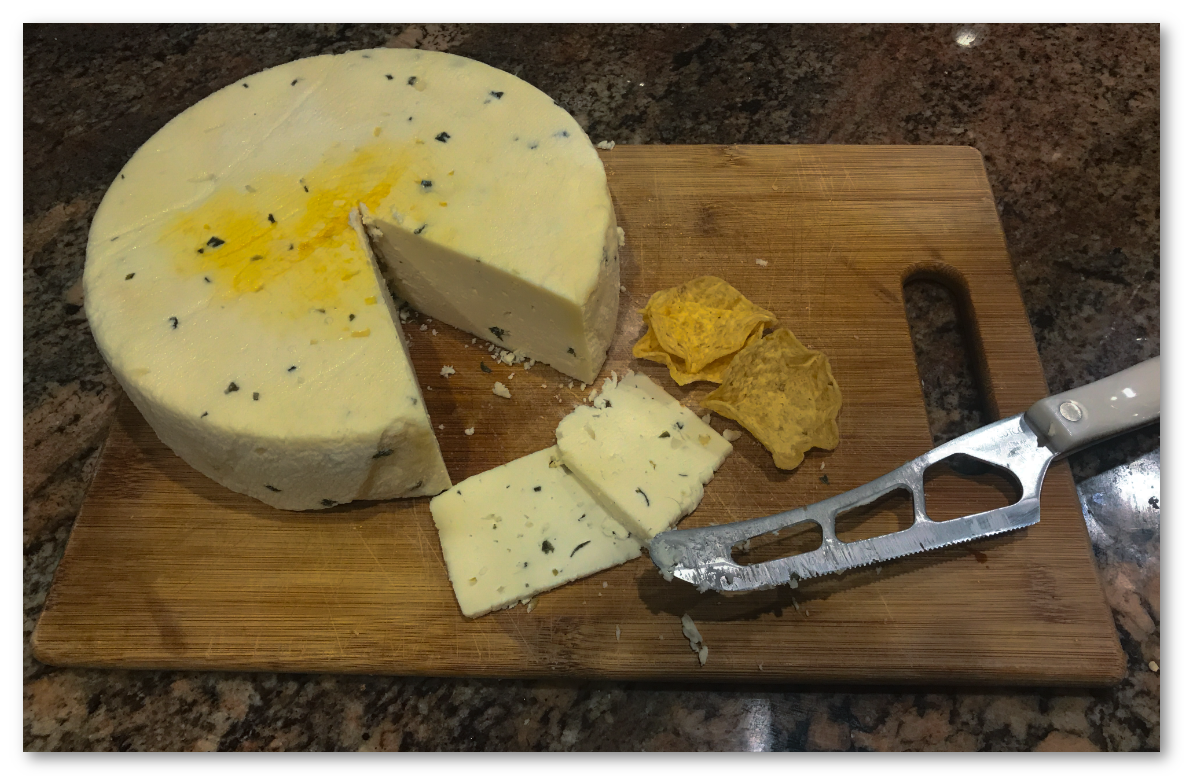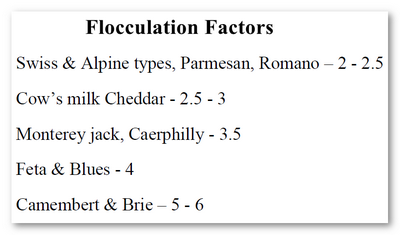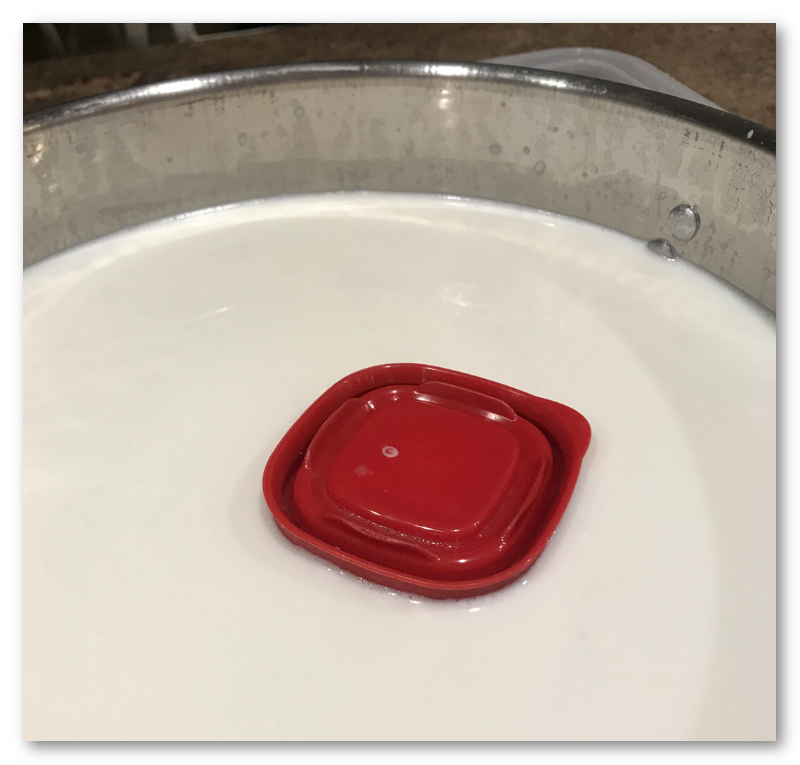I have not heard of a flocc test for cheese. What's involved?
First, the rationale behind doing it. After adding rennet, the longer you leave those curds before cutting, the stronger the curds become,
and the better they will retain water after they are cut. For hard cheeses, you don't want them to retain much water. For soft cheeses, you do. So,
- Hard cheese: small curds, cut early
- Soft cheese: large curds, wait much longer to cut
The idea is to measure the flocculation time, and based on the type of cheese calculate the time to cut the curds. This time can vary due to rennet strength, milk quality, etc.
Flocculation Test
First, you time how long it takes the cheese to set into curd (flocculate). typically, we just use a knife and look for a "clean break". But a better way is to take a little bowl or lid that floats, set it on the milk, and try to spin it. I use a little tupperware lid (see below). When it won't spin, your curds are set. The time between when you added rennet and when the curds set is your
flocculation time.
Depending on the type of cheese you are making, determine your
flocculation multiplier.
If you multiply the flocculation time and the flocculation factor, that's the time you should cut the curds after adding rennet. Example: if you're making feta, and the flocc time was 15 minutes, you'd wait 60 minutes to cut (60 minutes after rennet was add).





































![Craft A Brew - Safale S-04 Dry Yeast - Fermentis - English Ale Dry Yeast - For English and American Ales and Hard Apple Ciders - Ingredients for Home Brewing - Beer Making Supplies - [1 Pack]](https://m.media-amazon.com/images/I/41fVGNh6JfL._SL500_.jpg)























